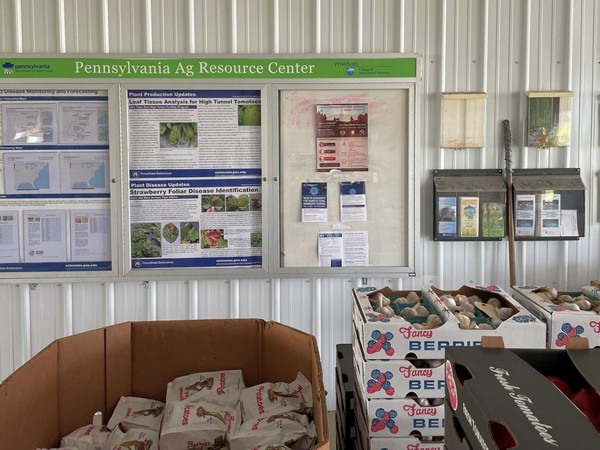Penn State Extension is expanding a program that offers educational kiosks at produce auctions across the state. These kiosks provide growers with timely, relevant information on the disease and pest identification and management, invasive species, and food safety.
Beth Gugino, professor of vegetable pathology in Penn State’s College of Agricultural Sciences, and her colleagues on the vegetable, small fruit, and mushroom extension team, have guided the development and implementation of this program.
Pennsylvania has 16 wholesale produce auction locations where growers can sell in-season produce, flowers, and other goods in bulk to local grocery chains, farm market stores, and independent retailers.
“In the past, buyers would have to go from farm to farm to purchase large amounts of produce, primarily from Amish and Mennonite growers,” Gugino said. “With the auctions, everything is in one place. They are an important market for growers who are not wholesaling directly to large retailers.”

“This community does not access technology the same way that other growers with broadband access would,” Gugino said, noting that the kiosks provide a way to distribute current information about pest and disease management.
Initial funding for the project came from the Plant Health Resource Center, which is part of the Ag Resource Centers initiative between Penn State and the state Department of Agriculture. Penn State Extension continues to support the endeavor.
Glass-enclosed panels on the kiosks allow information to be displayed and updated easily. Informational pamphlets are available for growers to take home. A few years ago, the team added lending libraries to some of the produce auctions for growers to borrow hard-copy resources.
Each year, the team designs five or six new posters based on issues they see in the field. This year saw new posters on cucurbit viruses, rust on sweet corn, strawberry crown-root diseases, high-soluble salt levels in high tunnel soils, the Food Safety Modernization Act, and postharvest winter squash rot. The posters are designed to enable the team to update or reuse them as needed.
Another new feature is the “PA Produce Grower” newsletter distributed every other week that summarizes issues extension educators are seeing on produce farms and greenhouses across the state. The newsletter covers production issues related to insects, diseases, and plant nutrition and consists of one sheet of paper with information printed on both sides. Each issue appears on different colored paper to help growers recognize a new edition.
For more information:
Penn State
814-865-4700
www.psu.edu
